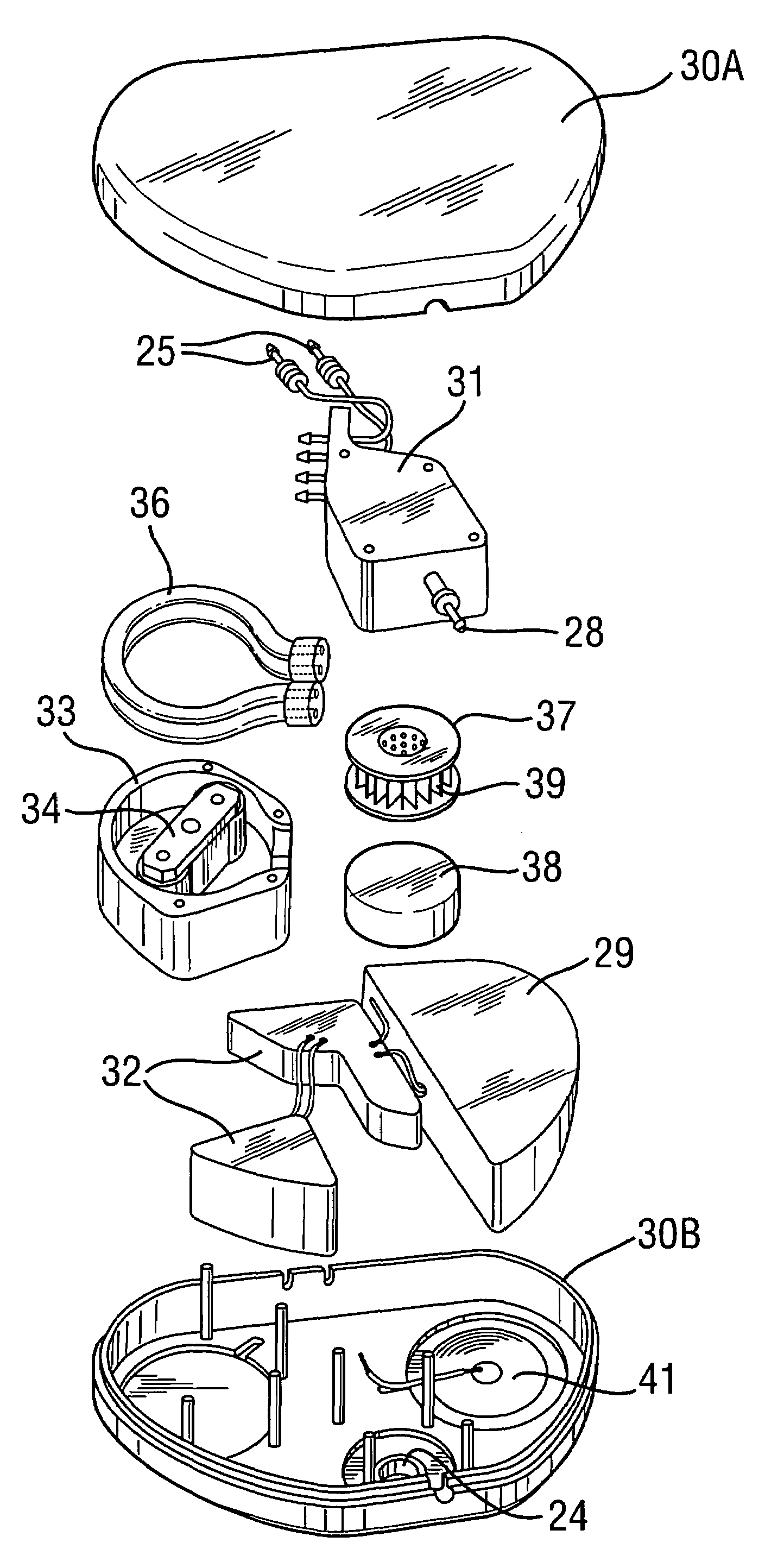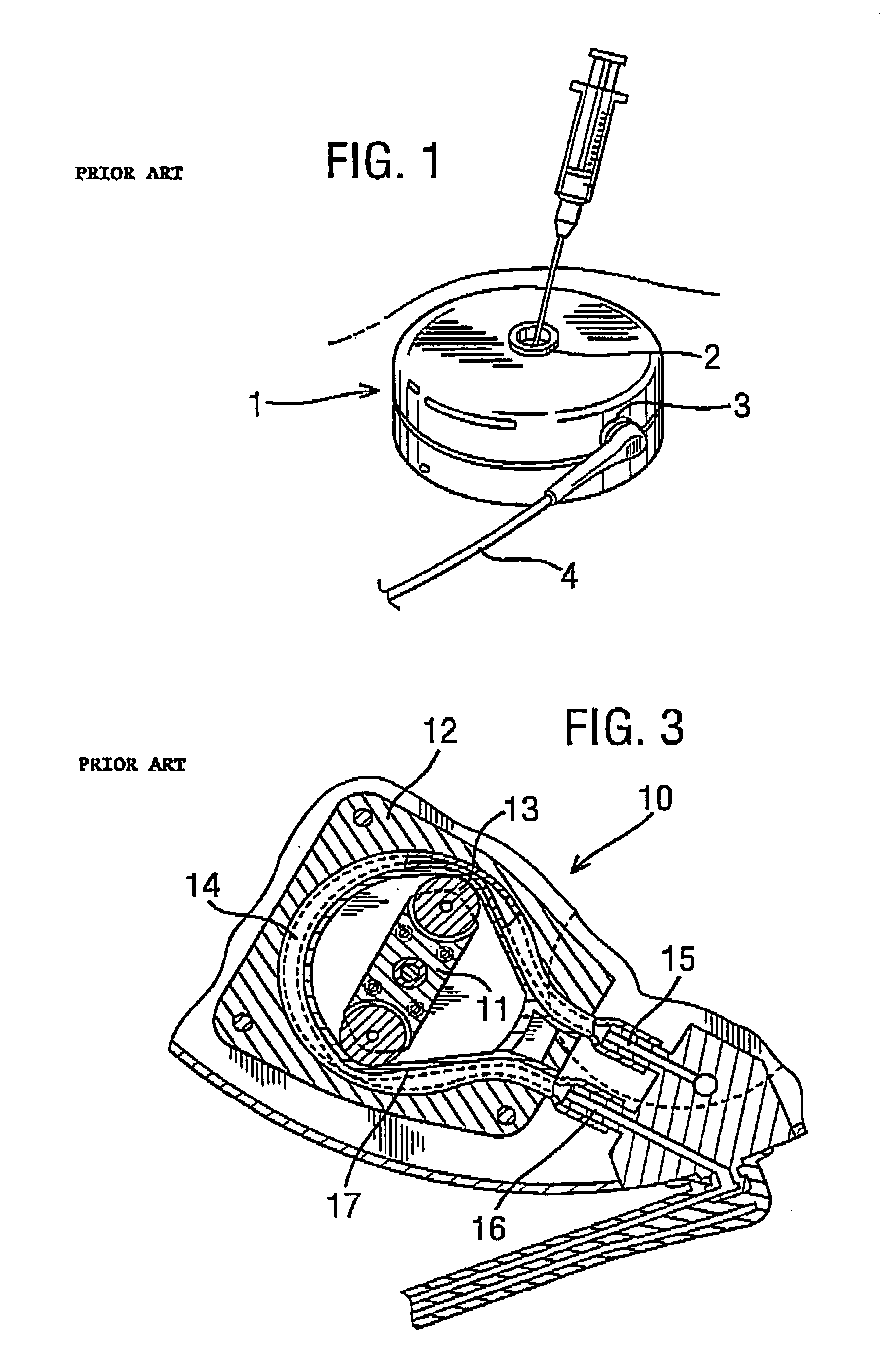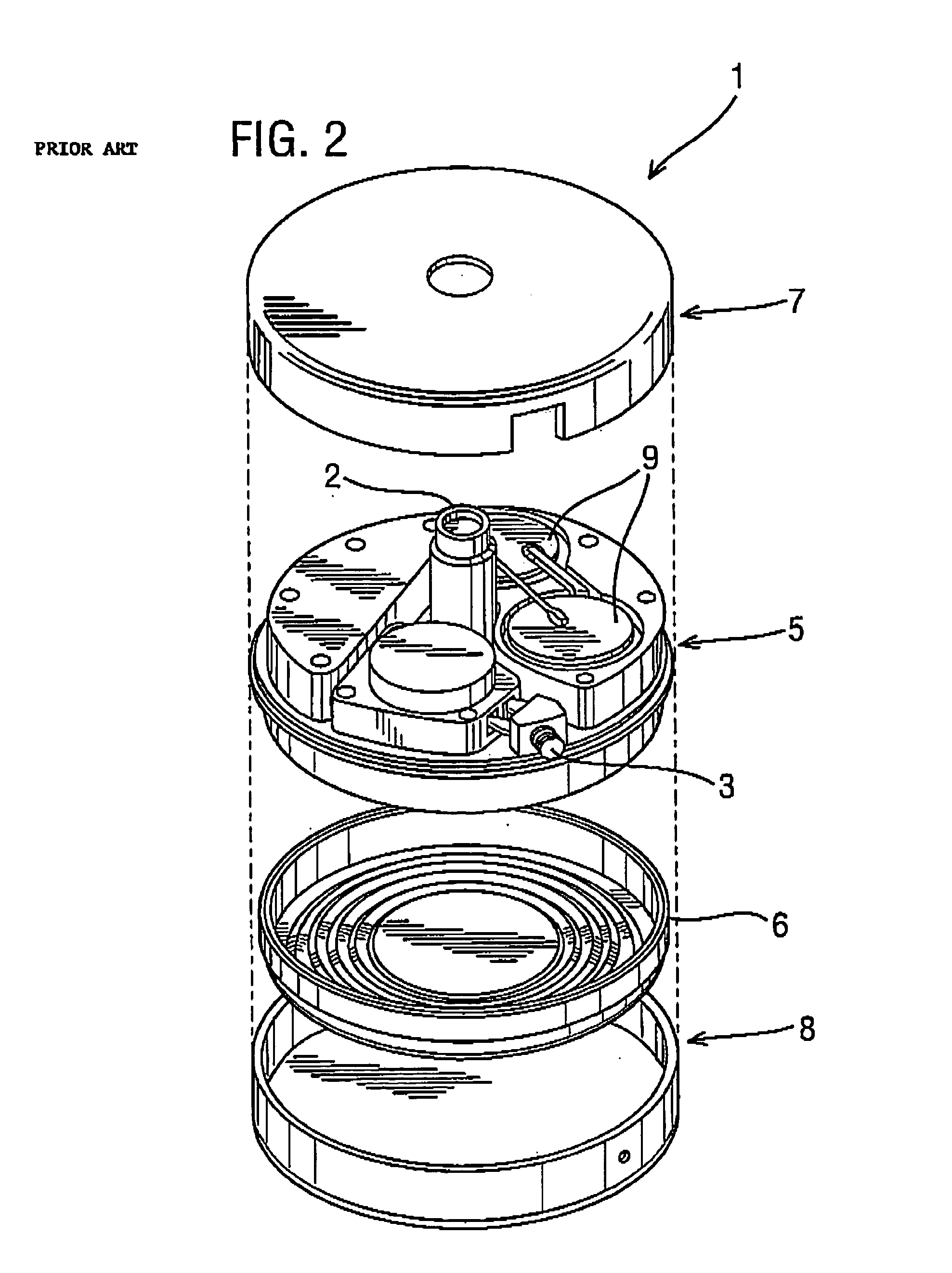Implantable drug delivery pump
a technology of implantable drug delivery and pump, which is applied in the direction of pharmaceutical delivery mechanism, infusion device, intravenous device, etc., can solve the problems of less reliable accuracy of drug delivery, less reliable passive drug dispenser in delivering the desired dose than mechanical dispenser, and unsatisfactory side effects of therapeutic agents to targets other than the desired target, etc., to achieve the effect of convenient percutaneous palpation
- Summary
- Abstract
- Description
- Claims
- Application Information
AI Technical Summary
Benefits of technology
Problems solved by technology
Method used
Image
Examples
Embodiment Construction
[0052]FIG. 4 is a schematic view showing an implantable drug delivery system. A reservoir unit 21 is shown implanted subcutaneously over the anterior abdominal wall of a patient, and preferably within the rectus sheath anterior to the rectus muscle. The reservoir unit 21 has the purpose of holding a volume of a drug for infusion, and since the unit 21 is quite bulky in order to retain as much drug as possible, such a location is very suitable. Leading from the reservoir unit 21 is a supply tube 22, which leads to a pump unit 23. The supply tube 22 is tunnelled subcutaneously between the reservoir unit 21 and the pump unit 23. The pump unit 23 is subcutaneously implanted in the subclavicular region. Implantation at this location is possible since the pump unit 23 is compact, made possible by the remote location of the reservoir unit 21. This location for the pump unit 23 is particularly advantageous since it should not prove to be inconvenient or uncomfortable to the patient, and yet...
PUM
 Login to View More
Login to View More Abstract
Description
Claims
Application Information
 Login to View More
Login to View More - R&D
- Intellectual Property
- Life Sciences
- Materials
- Tech Scout
- Unparalleled Data Quality
- Higher Quality Content
- 60% Fewer Hallucinations
Browse by: Latest US Patents, China's latest patents, Technical Efficacy Thesaurus, Application Domain, Technology Topic, Popular Technical Reports.
© 2025 PatSnap. All rights reserved.Legal|Privacy policy|Modern Slavery Act Transparency Statement|Sitemap|About US| Contact US: help@patsnap.com



